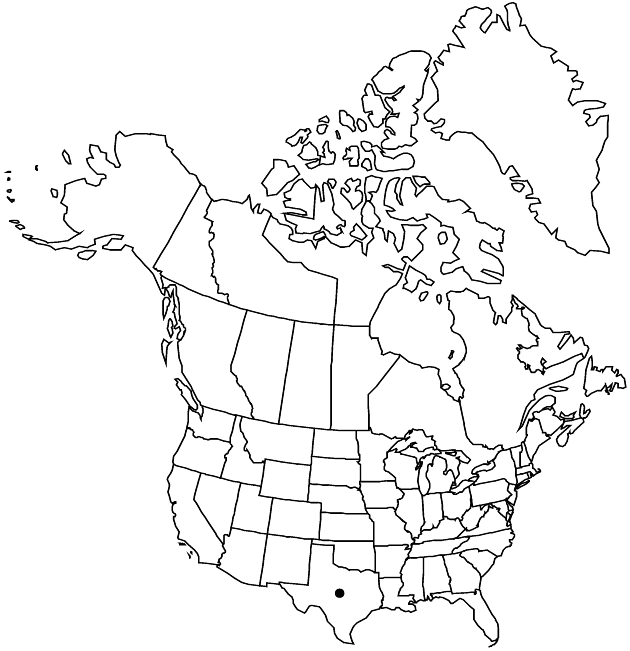Packera texensis
Sida 20: 945.
fig. 1. 2003.
Perennials, 20–40+ cm; taprooted (caudices woody, ascending to erect). Stems usually 1 or 2–5, rarely 6–20, clustered, glabrous but for tomentose leaf axils. Basal leaves petiolate; blades elliptic-ovate, broadly oblanceolate, or lyrate (lateral lobes 3–9 pairs), 40–70 × 15–25 mm, bases tapering, margins irregularly and deeply parted or lobed (apices incised). Cauline leaves usually gradually, sometimes abruptly, reduced (petiolate or sessile; narrowly elliptic to oblanceolate, pinnatifid). Heads 3–20+ in open or congested, corymbiform arrays, frequently subtended by smaller arrays from leaf axils. Peduncles ebracteate or bracteate, glabrous. Calyculi usually 0, sometimes inconspicuous. Phyllaries 13 or 21, light green, 4–6+ mm, glabrous. Ray florets (10–)13; corolla laminae 5–7+ mm. Disc florets 60–75+; corolla tubes 2–3 mm, limbs 2–3 mm. Cypselae 1–1.5 mm, hirsute on ribs; pappi 3–5 mm. 2n = 36.
Phenology: Flowering mid Feb–late Apr.
Habitat: Limestone plateaus overlain by dry, granitic sands and gneiss, roadsides, partially shaded areas, oak woodlands
Elevation: 200–400 m
Discussion
Packera texensis is known only from granitic sands of the Central Mineral Region on the Edwards Plateau of central Texas. It appears to be substrate specific.
Selected References
None.
